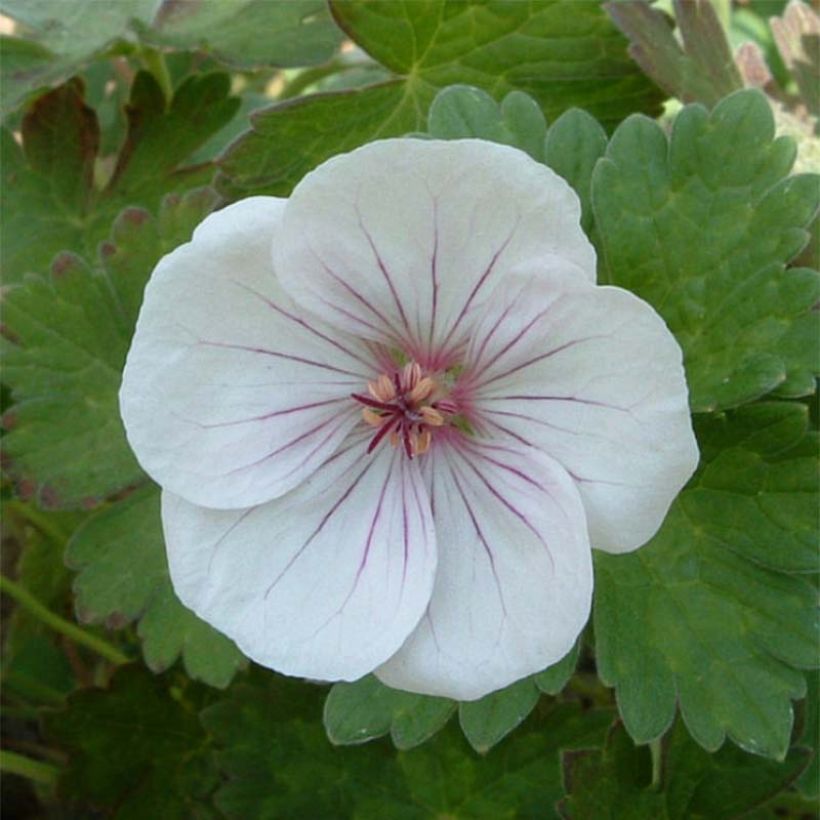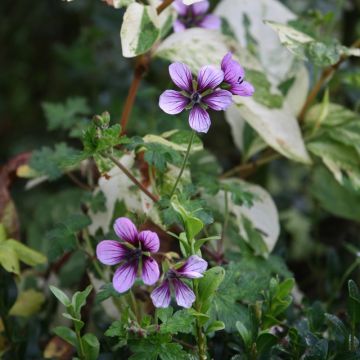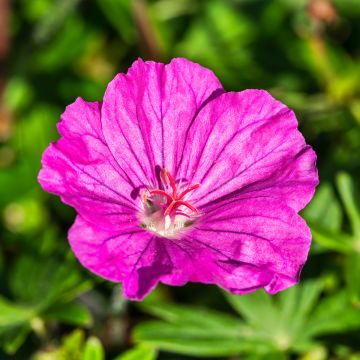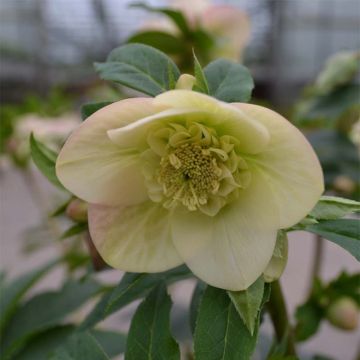Shipping country and language
Your country of residence may be:
Your country of residence is:
For a better user experience on our website, you can select:
Your shipping country:
-
Andorra
-
Austria
-
Belgium
-
Bulgaria
-
Canada
-
Chile
-
Croatia
-
Cyprus
-
Czechia
-
Denmark
-
Estonia
-
Finland
-
France
-
Germany
-
Greece
-
Hungary
-
Iceland
-
Ireland
-
Italy
-
Latvia
-
Lithuania
-
Luxembourg
-
Malta
-
Monaco
-
Netherlands
-
Poland
-
Portugal
-
Romania
-
Slovakia
-
Slovenia
-
Spain
-
Sweden
-
Switzerland
-
United Kingdom
We only deliver seed and bulb products to your country. If you add other products to your basket, they cannot be shipped.
Language:
-
French
-
German
-
Spanish
-
English
-
Italian
My Account
Hello
My wish lists
Log in / Register
Existing customer?
New customer?
Create an account to track your orders, access our customer service and, if you wish, make the most of our upcoming offers.


Geranium traversii var. elegans Coombland White
Geranium traversii var. elegans Coombland White
Geranium x traversii var. elegans Coombland White
Cranesbill, Hardy Geranium
Order in the next for dispatch today!
Dispatch by letter from €3.90.
Delivery charge from €5.90 Oversize package delivery charge from €6.90.
More information
This item is not available in your country.
Schedule delivery date,
and select date in basket
This plant carries a 12 months recovery warranty
More information
We guarantee the quality of our plants for a full growing cycle, and will replace at our expense any plant that fails to recover under normal climatic and planting conditions.
From €5.90 for pickup delivery and €6.90 for home delivery
Express home delivery from €8.90.
From €5.90 for pickup delivery and €6.90 for home delivery
Express home delivery from €8.90.
From €5.90 for pickup delivery and €6.90 for home delivery
Express home delivery from €8.90.
Does this plant fit my garden?
Set up your Plantfit profile →
Description
The perennial Geranium Coombland White, subtle and generous, forms a widely spread cushion that tirelessly produces a profusion of flowers from spring to the doorstep of autumn, ranging from white-pink to almost white, around a small purple centre. They bloom on slightly hairy foliage, soft to the touch, of a somewhat greyish green, often marbled with bronze, which generally persists in winter. It never becomes invasive, but elegantly covers the ground, especially at the base of old or English roses or in a trough on the terrace. Although hardy, it requires well-drained soil to pass the winter serenely.
The recently obtained Geranium Coombland White results from cross-breeding between Geranium lambertii Swansdown and Geranium traversii var. elegans - a union that has produced other very interesting cultivars such as the perennial geranium 'Joy', for example. From its parents it has inherited a certain fragility in relation to the cold, especially soils that are heavy and humid in winter. All these plants belong to the Geraniaceae family.
'Coombland White' has a large and widely spread dome-shaped habit, reaching 25 cm (10in) in height, with a minimum spread of 50 cm (20in), sometimes much more (up to 90 cm (35in)) if conditions allow. The flowering of this geranium is infinitely delicate and remarkably long-lasting, from May-June until October if the weather remains mild. The cup-shaped flowers, with 5 petals, measure 2 to 3 cm (1in) in diameter. At first bloom they are very pale pink. Over the hours they fade almost to white, but retain some small pink-violet veins converging towards a coloured heart of purple pink or dark red. The foliage remains in winter if within its hardiness zone (to -12°C (10.4°F) in porous soil). It is composed of generally rounded leaves, strongly cut into toothed lobes, slightly fuzzy. Their colour is a matte grey-green marbled with bronze, which perfectly highlights the small bright flowers.
The perennial Geranium Coombland White prefers sheltered situations and well-drained soils, but it will flower as generously in full sun as in partial shade. In regions where winter is not too severe, it is a problem-free plant that accompanies many perennials or bushes in the garden. However, its roots dislike cold wet soils in winter: in this case, it should be planted in a rockery or in a raised bed enriched with gravel. It covers the ground without suffocating it, forming pretty borders and beautiful carpets at the base of roses. It can also be planted above a wall, among aubrietas, violets, or campanula plants. It also has a great effect in a trough on the terrace or balcony, over which it will gracefully cascade.
Report an error about the product description
Geranium traversii var. elegans Coombland White in pictures




Flowering
Foliage
Plant habit
Botanical data
Geranium
x traversii var. elegans
Coombland White
Geraniaceae
Cranesbill, Hardy Geranium
Cultivar or hybrid
Other Hardy Geranium - Cranesbill
Planting and care
This perennial geranium enjoys the sun and partial shade, as well as moderately cold climates in winter. It can withstand short frosts of around -12°C (10.4°F) if planted in well-draining soil. Choose a location sheltered from cold, dry winds. Install it in cool, dry, light, even chalky soil that is very well-drained. It dislikes heavy, waterlogged soils in winter. Plant it in spring or autumn. Water regularly to help the plants establish. You can regularly remove faded flowers to encourage reblooming. This easy-going plant requires little maintenance. Winter protection is welcome in slightly colder regions: place e.g. a blanket of fern leaves on your geranium, without suffocating or completely covering it: its foliage needs to breathe in winter! Only water mature plants during very dry periods.
Planting period
Intended location
Care
-
, onOrder confirmed
Reply from on Promesse de fleurs
Spring flowering perennials
Haven't found what you were looking for?
Hardiness is the lowest winter temperature a plant can endure without suffering serious damage or even dying. However, hardiness is affected by location (a sheltered area, such as a patio), protection (winter cover) and soil type (hardiness is improved by well-drained soil).

Photo Sharing Terms & Conditions
In order to encourage gardeners to interact and share their experiences, Promesse de fleurs offers various media enabling content to be uploaded onto its Site - in particular via the ‘Photo sharing’ module.
The User agrees to refrain from:
- Posting any content that is illegal, prejudicial, insulting, racist, inciteful to hatred, revisionist, contrary to public decency, that infringes on privacy or on the privacy rights of third parties, in particular the publicity rights of persons and goods, intellectual property rights, or the right to privacy.
- Submitting content on behalf of a third party;
- Impersonate the identity of a third party and/or publish any personal information about a third party;
In general, the User undertakes to refrain from any unethical behaviour.
All Content (in particular text, comments, files, images, photos, videos, creative works, etc.), which may be subject to property or intellectual property rights, image or other private rights, shall remain the property of the User, subject to the limited rights granted by the terms of the licence granted by Promesse de fleurs as stated below. Users are at liberty to publish or not to publish such Content on the Site, notably via the ‘Photo Sharing’ facility, and accept that this Content shall be made public and freely accessible, notably on the Internet.
Users further acknowledge, undertake to have ,and guarantee that they hold all necessary rights and permissions to publish such material on the Site, in particular with regard to the legislation in force pertaining to any privacy, property, intellectual property, image, or contractual rights, or rights of any other nature. By publishing such Content on the Site, Users acknowledge accepting full liability as publishers of the Content within the meaning of the law, and grant Promesse de fleurs, free of charge, an inclusive, worldwide licence for the said Content for the entire duration of its publication, including all reproduction, representation, up/downloading, displaying, performing, transmission, and storage rights.
Users also grant permission for their name to be linked to the Content and accept that this link may not always be made available.
By engaging in posting material, Users consent to their Content becoming automatically accessible on the Internet, in particular on other sites and/or blogs and/or web pages of the Promesse de fleurs site, including in particular social pages and the Promesse de fleurs catalogue.
Users may secure the removal of entrusted content free of charge by issuing a simple request via our contact form.
The flowering period indicated on our website applies to countries and regions located in USDA zone 8 (France, the United Kingdom, Ireland, the Netherlands, etc.)
It will vary according to where you live:
- In zones 9 to 10 (Italy, Spain, Greece, etc.), flowering will occur about 2 to 4 weeks earlier.
- In zones 6 to 7 (Germany, Poland, Slovenia, and lower mountainous regions), flowering will be delayed by 2 to 3 weeks.
- In zone 5 (Central Europe, Scandinavia), blooming will be delayed by 3 to 5 weeks.
In temperate climates, pruning of spring-flowering shrubs (forsythia, spireas, etc.) should be done just after flowering.
Pruning of summer-flowering shrubs (Indian Lilac, Perovskia, etc.) can be done in winter or spring.
In cold regions as well as with frost-sensitive plants, avoid pruning too early when severe frosts may still occur.
The planting period indicated on our website applies to countries and regions located in USDA zone 8 (France, United Kingdom, Ireland, Netherlands).
It will vary according to where you live:
- In Mediterranean zones (Marseille, Madrid, Milan, etc.), autumn and winter are the best planting periods.
- In continental zones (Strasbourg, Munich, Vienna, etc.), delay planting by 2 to 3 weeks in spring and bring it forward by 2 to 4 weeks in autumn.
- In mountainous regions (the Alps, Pyrenees, Carpathians, etc.), it is best to plant in late spring (May-June) or late summer (August-September).
The harvesting period indicated on our website applies to countries and regions in USDA zone 8 (France, England, Ireland, the Netherlands).
In colder areas (Scandinavia, Poland, Austria...) fruit and vegetable harvests are likely to be delayed by 3-4 weeks.
In warmer areas (Italy, Spain, Greece, etc.), harvesting will probably take place earlier, depending on weather conditions.
The sowing periods indicated on our website apply to countries and regions within USDA Zone 8 (France, UK, Ireland, Netherlands).
In colder areas (Scandinavia, Poland, Austria...), delay any outdoor sowing by 3-4 weeks, or sow under glass.
In warmer climes (Italy, Spain, Greece, etc.), bring outdoor sowing forward by a few weeks.





















